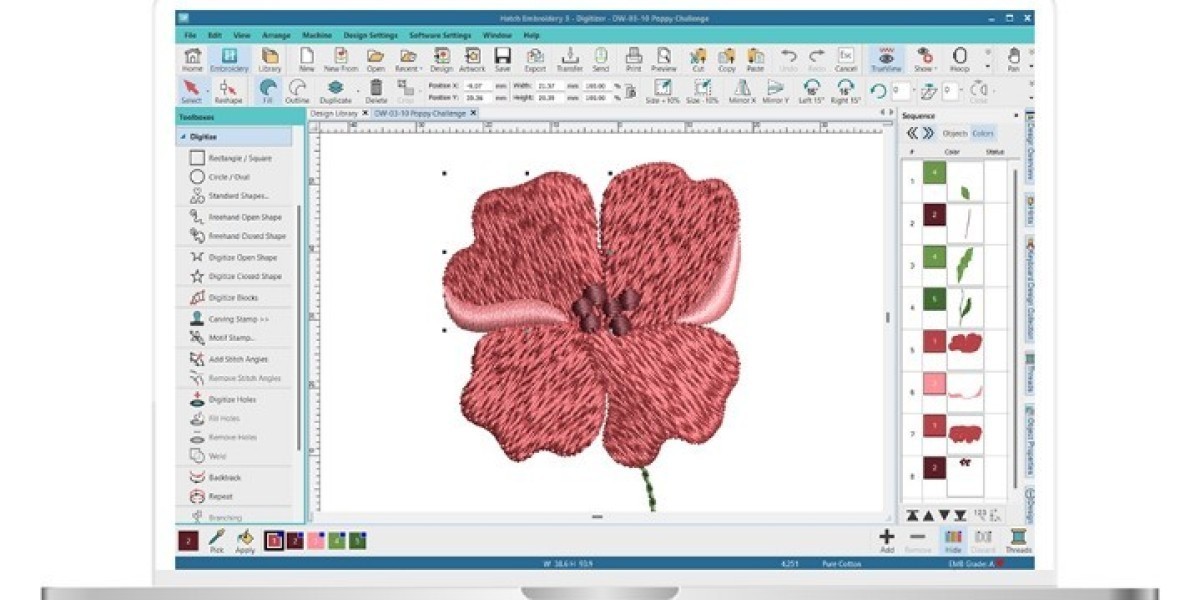Introduction
There's a special kind of magic in watching an embroidery machine bring a design to life. But that magic can quickly turn to frustration when you see puckered fabric, jagged edges, or thread breaks. The difference between a flawless stitch-out and a disappointing mess often comes down to one crucial step: the quality of your Embroidery Digitizing. This process of converting artwork into a language your machine understands is both an art and a science, and mastering a few key principles can transform your results from amateur to professional.
Whether you're digitizing your company logo or creating custom designs, understanding what to do and what to avoid makes all the difference. Clean stitching doesn't happen by accident—it's the direct result of smart digitizing choices that account for how thread interacts with fabric. Let's explore the essential do's and don'ts that will help you achieve the crisp, professional embroidery you've been working toward.
The Foundation: Understanding Why These Rules Matter
Before we dive into specific techniques, it's important to understand why digitizing requires such careful attention. Unlike printing or screen display, embroidery is a physical process where thread interacts with fabric under tension. Every stitch pulls on the material, and the digitizing process must account for this physical reality.
Think of your digitized file as the architectural blueprint for your embroidery. A well-planned blueprint leads to a sturdy, beautiful building, while a flawed one leads to structural problems. Similarly, your digitizing choices directly determine whether your design will lie flat, maintain its shape, and withstand wear and washing. With that foundation in mind, let's explore the key principles that separate successful digitizing from common mistakes.
The Do's: Essential Practices for Professional Results
Do Start with High-Quality Artwork
Your digitizing can only be as good as your source material. Begin with the cleanest, highest-resolution version of your design possible. Vector files (AI, EPS, SVG) are ideal because they maintain crisp edges at any size. If you're working with a raster image (JPEG, PNG), ensure it's high-resolution with clear, distinct elements. Clean artwork gives your digitizing software clear boundaries to work with, resulting in cleaner stitches.
Do Use Appropriate Stitch Types for Each Element
Professional digitizers match stitch types to design elements like a chef selects the right knife for each task. Use satin stitches for text and borders up to about 10mm wide—they create smooth, shiny columns that make details pop. Choose fill stitches for larger areas that need coverage, and employ running stitches for fine details and outlining. Matching the stitch type to the element's purpose and size is fundamental to clean results.
Do Implement Strategic Underlay Stitches
Underlay is the invisible foundation of professional embroidery. These hidden stitches stabilize the fabric, prevent puckering, and help top stitches look their best. Use edge run underlay to define shapes, zigzag underlay to stabilize satin columns, and grid underlay for large fill areas. Proper underlay might be invisible in the final product, but you'll definitely notice its absence when fabric puckers or stitches sink into the material.
Do Test on Actual Project Fabric
Never skip the test stitch. Your design might look perfect on screen but behave differently on various fabrics. Always stitch a sample using the exact material, stabilizer, and thread you plan to use for your final project. Watch for puckering, registration issues, or thread breaks, and use what you learn to refine your digitizing before running your actual project.
The Don'ts: Common Mistakes to Avoid
Don't Use Excessive Stitch Density
This is perhaps the most common digitizing error. Too many stitches packed too closely together creates a stiff, cardboard-like feel and causes fabric puckering. It also increases the risk of thread breaks and needle damage. Find the minimum density that provides good coverage without these negative effects. For most fill stitches, a density between 0.4mm and 0.6mm works well.
Don't Ignore Pull Compensation
Fabric naturally pushes and pulls as stitches form, which can distort your design. Without pull compensation, circles become ovals and squares become trapezoids. Implement pull compensation by slightly oversizing shapes in your digital file so they contract into the correct dimensions during stitching. This simple adjustment makes a dramatic difference in maintaining design accuracy.
Don't Create Overly Long Stitches
Long stitches, particularly in satin columns, create loose threads that easily snag and break. They also make curves look jagged instead of smooth. Keep satin stitches under 4mm for straight sections and even shorter for curves. For fill stitches, reasonable stitch lengths ensure good coverage without creating weak points in your design.
Don't Forget About Stitch Direction
The angle of your stitches significantly impacts both appearance and performance. Stitches running parallel to delicate fabric grains can cause runs or distortion. Changing stitch directions between adjacent elements helps them lie flat against each other. For fill areas, consider angling stitches to complement the shape—diagonal stitches often work well for square designs, while curved elements might benefit from radial stitching.
Advanced Techniques for Cleaner Results
Once you've mastered the basics, these additional techniques can further enhance your results.
Manage Your Stitch Sequence Intelligently
The order in which your design stitches out matters more than you might think. Group elements by color to minimize thread changes. Stitch from the center outward to distribute tension evenly. Plan a logical path that minimizes long jump stitches between elements. Smart sequencing reduces production time and creates a cleaner-looking backside on your embroidery.
Adjust for Different Fabric Types
A design digitized for sturdy denim will likely pucker on stretchy knit fabric. Consider your end material throughout the digitizing process. Use lighter densities and more underlay for stretchy fabrics. For towels or other high-pile materials, increase density to push down the pile and ensure clean definition.
Simplify Complex Designs
Not every detail in your original artwork will translate well to embroidery. Simplify designs by removing extremely fine lines, minimizing small text, and reducing unnecessary detail. Remember that embroidery has different limitations than printing—what works on paper might not work in thread.
Troubleshooting Common Issues
Even with careful digitizing, you might encounter some common problems. Here's how to address them:
If you see fabric puckering, reduce stitch density and ensure you're using proper underlay. For registration issues (where colors don't align properly), check your pull compensation and stabilizer choice. If thread keeps breaking, look for areas with excessive density or sharp corners where stitches pile up.
Keep a notebook of what adjustments solve specific problems. This personal reference will become invaluable as you develop your digitizing skills.
Conclusion: Practice Makes Permanent
Embroidery digitizing is a skill that develops with practice and patience. The do's and don'ts we've covered provide a solid foundation, but true mastery comes from applying these principles repeatedly and learning from each project.
Remember that every professional digitizer started where you are now. Each design you create, each test stitch you analyze, and each adjustment you make brings you closer to consistent, professional results. Don't get discouraged by imperfect early attempts—view them as learning opportunities that build your skills.
Clean stitching begins long before you hoop your fabric—it starts with thoughtful digitizing choices that respect the physical nature of embroidery. By following these guidelines and developing your eye for what makes a design stitch well, you'll create embroidery that looks professional, wears well, and makes you proud to show it off. The path to perfect stitching is paved with good digitizing habits, and now you have the knowledge to build those habits successfully.



